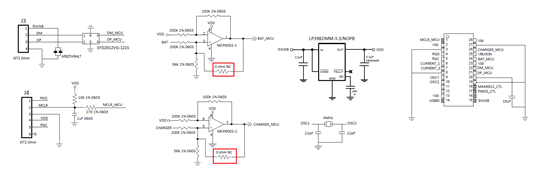Hello,
I am writing this post since I have an issue with the LP3892IMM-3.3/NOPB, the output voltage is not 3.3V it is actually 5.1V which is the input voltage. I read in a previous post that another person had the same issue with the 1.8V version (here the post title LP3982IMM-1.8/NOPB: Output voltage 3.3V instead of 1.8V written by Balasubramanian Periasamy). When the device is OFF I mesure no short circuit between the INPUT pin and the OUTPUT pin, as soon as the power is conected then a short cicuit appear.
What is weird is that the fisrt time I turn ON the device the output voltage was 3.3V as expected, but then I disconnect and connect again and the output is 5.1V and since then the output keep the same. I check the PCB for a possible short circuit and there is nothing so I discard a PCB or layout issue. Since another person had the same problem I am wondering if you can provide more detail of what could be happening, is important to notice that my device is USB powered, as you can see in the attached file I am using the reference design in my circuit.
We are planning to use this IC is a new product and we expected to sell more than 20.000 units, as you can image this issue is a huge problem for us.
Best Regards
Mark Burger


